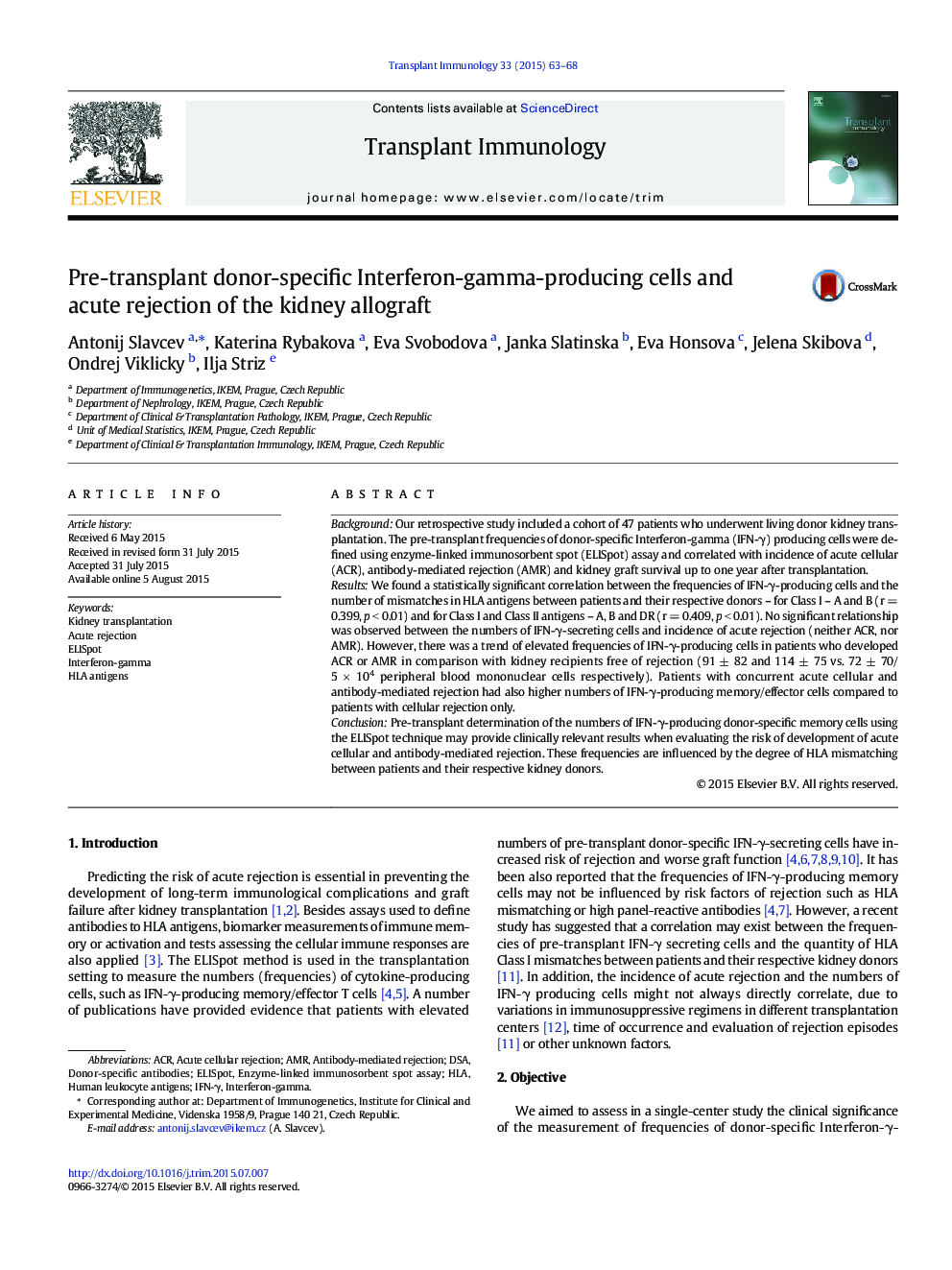| Article ID | Journal | Published Year | Pages | File Type |
|---|---|---|---|---|
| 3392021 | Transplant Immunology | 2015 | 6 Pages |
•Donor-specific Interferon-gamma-producing cells were defined using ELISpot assay.•HLA mismatches and the frequencies of IFN-γ-producing cells significantly correlated.•The numbers of IFN-γ-producing donor-specific cells are relevant for rejection prediction.
BackgroundOur retrospective study included a cohort of 47 patients who underwent living donor kidney transplantation. The pre-transplant frequencies of donor-specific Interferon-gamma (IFN-γ) producing cells were defined using enzyme-linked immunosorbent spot (ELISpot) assay and correlated with incidence of acute cellular (ACR), antibody-mediated rejection (AMR) and kidney graft survival up to one year after transplantation.ResultsWe found a statistically significant correlation between the frequencies of IFN-γ-producing cells and the number of mismatches in HLA antigens between patients and their respective donors – for Class I – A and B (r = 0.399, p < 0.01) and for Class I and Class II antigens – A, B and DR (r = 0.409, p < 0.01). No significant relationship was observed between the numbers of IFN-γ-secreting cells and incidence of acute rejection (neither ACR, nor AMR). However, there was a trend of elevated frequencies of IFN-γ-producing cells in patients who developed ACR or AMR in comparison with kidney recipients free of rejection (91 ± 82 and 114 ± 75 vs. 72 ± 70/5 × 104 peripheral blood mononuclear cells respectively). Patients with concurrent acute cellular and antibody-mediated rejection had also higher numbers of IFN-γ-producing memory/effector cells compared to patients with cellular rejection only.ConclusionPre-transplant determination of the numbers of IFN-γ-producing donor-specific memory cells using the ELISpot technique may provide clinically relevant results when evaluating the risk of development of acute cellular and antibody-mediated rejection. These frequencies are influenced by the degree of HLA mismatching between patients and their respective kidney donors.
